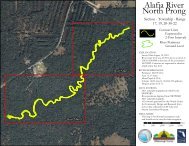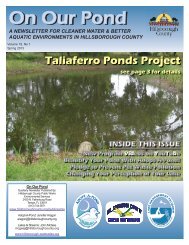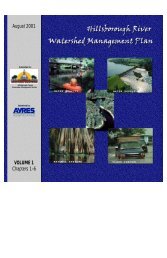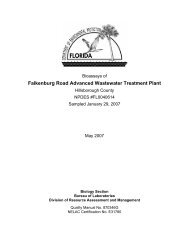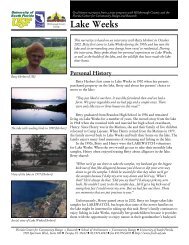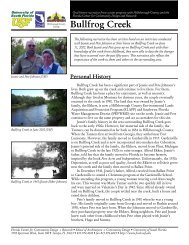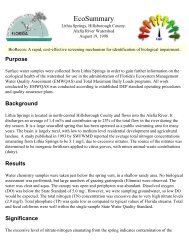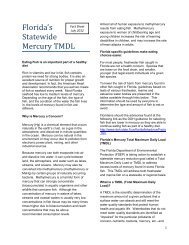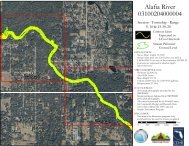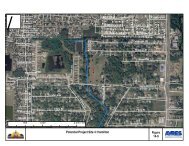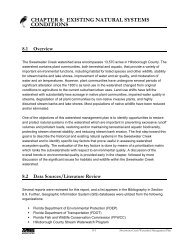Rocky Brushy Creek Watershed Mgmt. Plan (2007) -- Part 2
Rocky Brushy Creek Watershed Mgmt. Plan (2007) -- Part 2
Rocky Brushy Creek Watershed Mgmt. Plan (2007) -- Part 2
You also want an ePaper? Increase the reach of your titles
YUMPU automatically turns print PDFs into web optimized ePapers that Google loves.
CHAPTER 9: WATER SUPPLY9.1 OverviewThe combination of increased water demand with the highly karstic nature of the watershed’sgeology has resulted in the development of a number of critical issues relating to water supply,including:• lowered average water levels and increased fluctuations in lakes and wetlands• declines in average elevations of the potentiometric surface and the water table• increased annual fluctuations in the elevations of the potentiometric surface and the watertable• reduced streamflows in the <strong>Rocky</strong>/<strong>Brushy</strong> <strong>Creek</strong> system• saltwater contamination of inland and coastal groundwater sources due to lateral salineintrusion and upconing• reduced reliability of private water supply wells• increased sinkhole occurrence• contamination of groundwater resources by septic tanks and stormwater runoffAs a result of these issues, increased emphasis has been placed on the development of alternativewater supply sources, reuse, off-line reservoirs, surface water withdrawals, aquifer storage andrecovery, and water conservation programs in the region. In 2002, an estimated 36% of theCounty’s water demand was supplied by surface waters, a figure that is 3% higher than in 1993.This entire amount was derived from the Hillsborough River Reservoir system which provides themajority of the City of Tampa’s water supply. The reservoir system includes the HillsboroughRiver, Sulphur Springs, and the Tampa Bypass Canal. Groundwater resources occur throughoutthe County; however, higher quality groundwater is typically found with increasing distances fromthe coast.Sinkhole formation occurs throughout the county with most occurrences reported in northern andwestern Hillsborough County. Northwest Hillsborough county is considered to be an area of “verynumerous” sinkhole formation, particularly the cover – collapse category of sinkholes that occurabruptly. The Florida Department of Environmental Protection (FDEP) Sinkhole Database (2006)lists a total of 84 sinkholes have been reported in the Northwest Hillsborough area, many of whichoccurred in the vicinity of the Cosme, Section 21, and Eldridge – Wilde Wellfields. For example,within 1 month of increasing the pumping rate at Section 21 wellfield, 64 new sinkholes formedwithin a 1-mile radius of the well field. Most of the sinkholes were formed in the vicinity of well 21-10, which was pumping at nearly twice the rate of the other wells. Neighboring areas also noticeddramatic declines in lake levels and dewatering of wetland areas. At this point it is recognized that9-1 <strong>Rocky</strong>/<strong>Brushy</strong> <strong>Creek</strong> <strong>Watershed</strong> Management <strong>Plan</strong>



